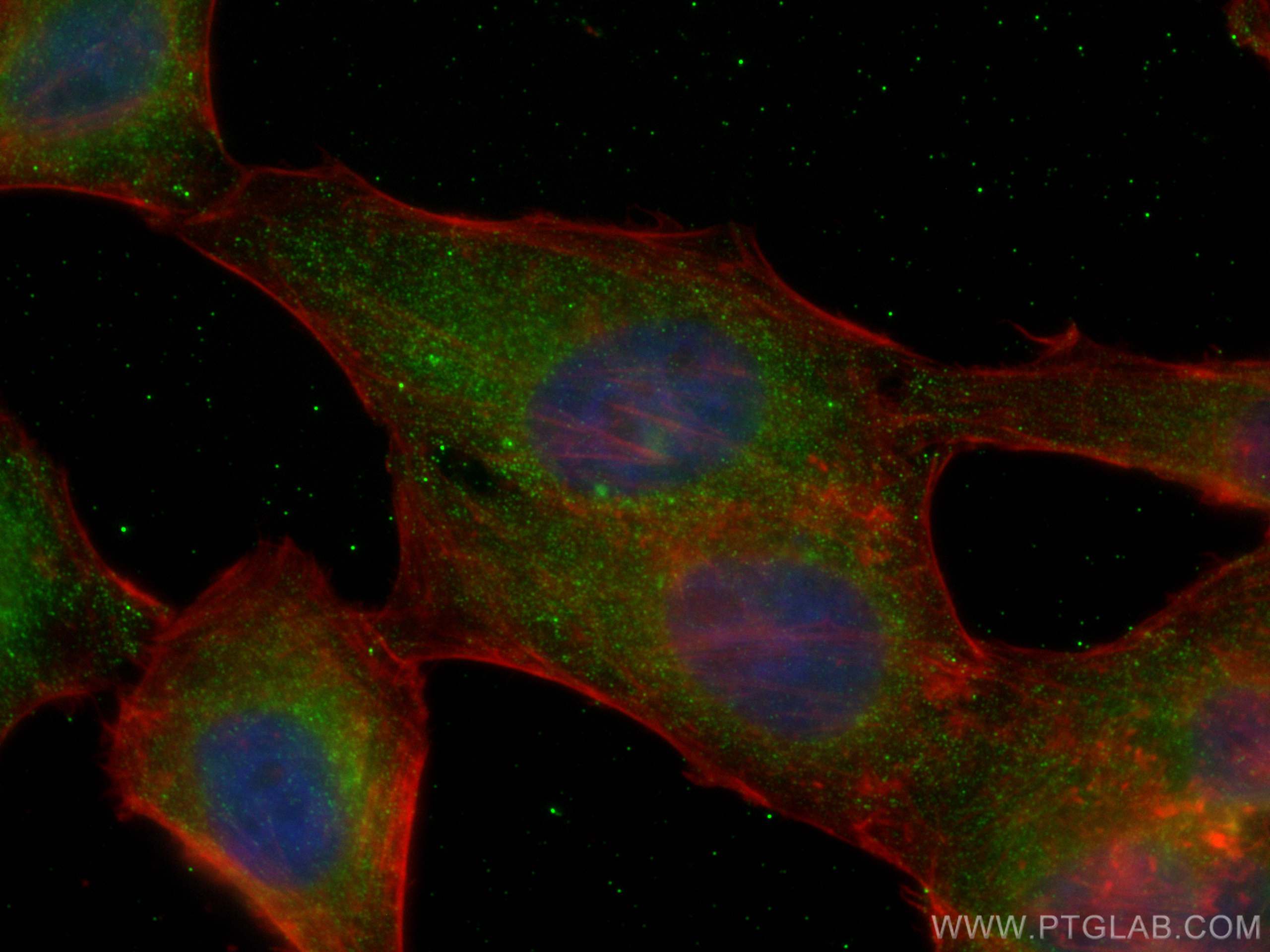Anticorps Monoclonal anti-D2HGDH
D2HGDH Monoclonal Antibody for IF
Hôte / Isotype
Mouse / IgG1
Réactivité testée
Humain, rat, souris
Applications
IF
Conjugaison
CoraLite® Plus 488 Fluorescent Dye
CloneNo.
1E9B3
N° de cat : CL488-66364
Synonymes
Galerie de données de validation
Applications testées
| Résultats positifs en IF | cellules HepG2, |
Dilution recommandée
| Application | Dilution |
|---|---|
| Immunofluorescence (IF) | IF : 1:50-1:500 |
| It is recommended that this reagent should be titrated in each testing system to obtain optimal results. | |
| Sample-dependent, check data in validation data gallery | |
Informations sur le produit
CL488-66364 cible D2HGDH dans les applications de IF et montre une réactivité avec des échantillons Humain, rat, souris
| Réactivité | Humain, rat, souris |
| Hôte / Isotype | Mouse / IgG1 |
| Clonalité | Monoclonal |
| Type | Anticorps |
| Immunogène | D2HGDH Protéine recombinante Ag5036 |
| Nom complet | D-2-hydroxyglutarate dehydrogenase |
| Masse moléculaire calculée | 521 aa, 56 kDa |
| Poids moléculaire observé | 56 kDa |
| Numéro d’acquisition GenBank | BC036604 |
| Symbole du gène | D2HGDH |
| Identification du gène (NCBI) | 728294 |
| Conjugaison | CoraLite® Plus 488 Fluorescent Dye |
| Excitation/Emission maxima wavelengths | 493 nm / 522 nm |
| Forme | Liquide |
| Méthode de purification | Purification par protéine G |
| Tampon de stockage | PBS avec glycérol à 50 %, Proclin300 à 0,05 % et BSA à 0,5 %, pH 7,3. |
| Conditions de stockage | Stocker à -20 °C. Éviter toute exposition à la lumière. Stable pendant un an après l'expédition. L'aliquotage n'est pas nécessaire pour le stockage à -20oC Les 20ul contiennent 0,1% de BSA. |
Informations générales
D2HGDH(D-2-hydroxyglutarate dehydrogenase, mitochondrial) is also named as D2HGD and belongs to the FAD-binding oxidoreductase/transferase type 4 family.It catalyzes the oxidation of D-2-hydroxyglutarate to alpha-ketoglutarate.Defects in D2HGDH are the cause of D-2-hydroxyglutaric aciduria type 1 (D2HGA1).
Protocole
| Product Specific Protocols | |
|---|---|
| IF protocol for CL Plus 488 D2HGDH antibody CL488-66364 | Download protocol |
| Standard Protocols | |
|---|---|
| Click here to view our Standard Protocols |


